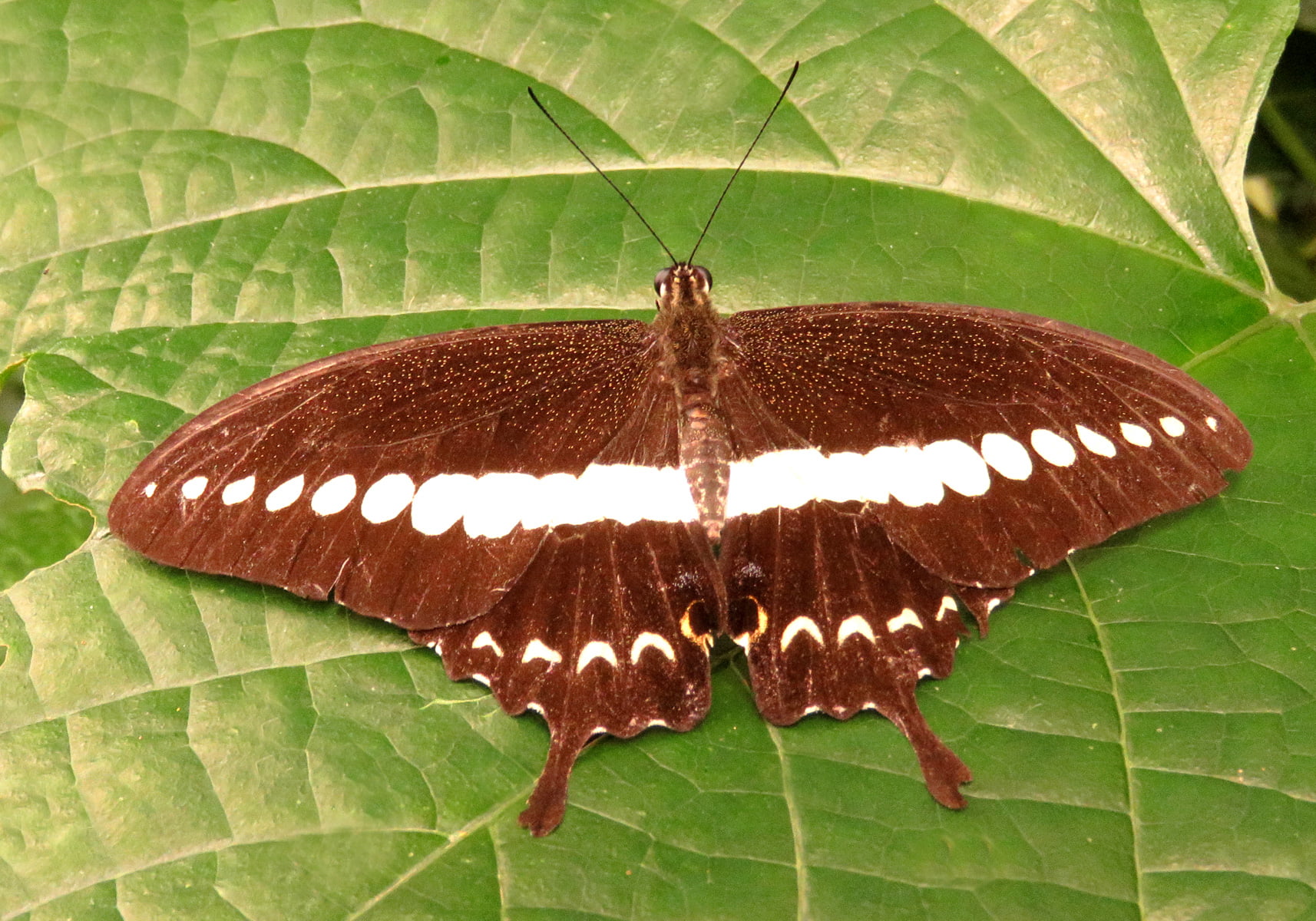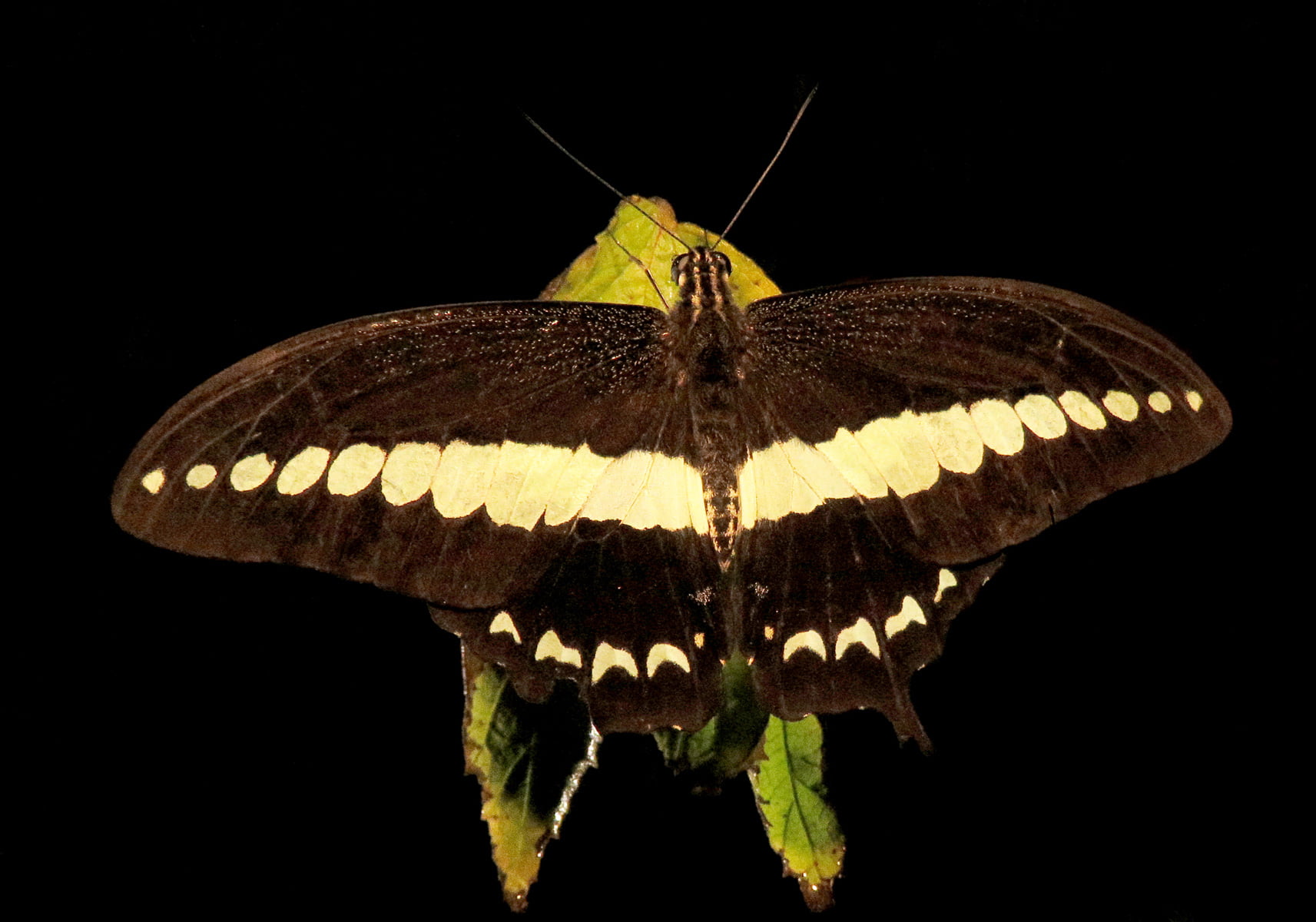Papilio demolion has black upper hindwings with pale greenish transverse bands from the tips of the forewings to the center of the dorsum. On the underside of the hindwings there is a series of pale greenish sub-marginal spots and black eye spots surrounded by orange-red in the tornal area (rear end of the wing). There is a long spatula-shaped tail behind the wing. The underside of the wings is a pale greenish colored macular band, between the macular bands and the sub-marginal lunar bounded by two series of black spots with orange and greenish green spots.
Larva: The newly hatched Papilio demolion larvae are yellowish brown with a length of about 3 mm. At the 5th instar, the color changes to bluish then green with a faded yellowish brown band at the end of the 5th instar. The pupa forms under the surface of the stem or petiole.
Pupa: Papilio demolion pupae have two forms of color. Green pupae are mostly green with large triangular patches of yellowish green on the back of the abdominal segment. Brown pupae are mostly grayish brown with dark patches. Each pupa has a pair of horns on its head, the body of the cocoon tilts to the side. The length of the pupa is about 31 – 32 mm.


